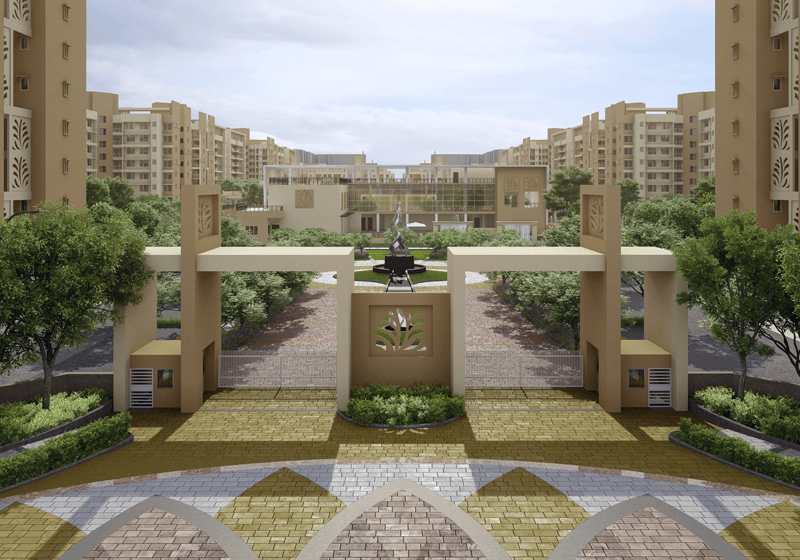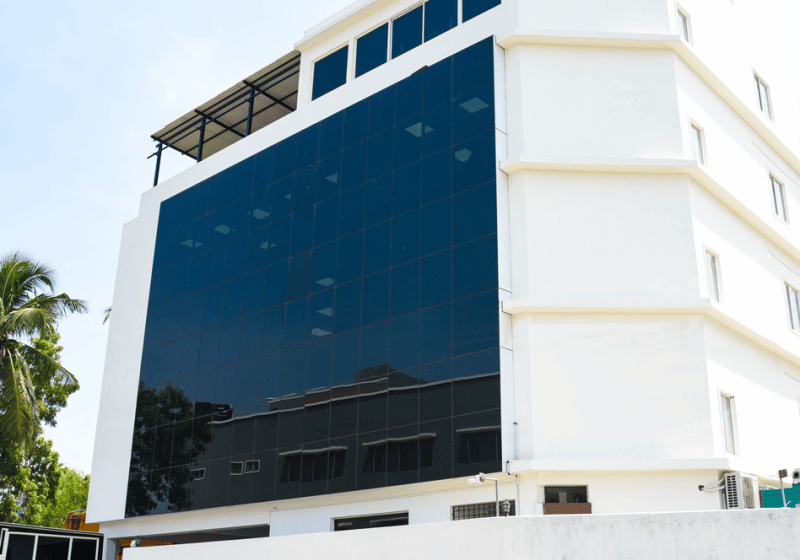Leading real estate developers share their analysis for 2020 and implications for 2021 across different segments of the sector.
Shelter is one of the three essentials of life, and COVID-19 brought home the significance of it. Starting with the concepts of working from home and studying from home, conducting meetings from home and celebrating events from home (such as online participation in weddings) became common in 2020.
Suddenly, the size of a residence and scope to carve out dedicated zones for work and study became important. Upgrading to a larger home became a priority, and the lockdown phase was spent in online searches. As soon as travel became possible, site visits and bookings took off, to an extent that the last quarter of 2020 seemed to herald a major revival in the residential segment during 2021.
But what about the other segments, and how have announcements or policy decisions influenced market trends? Read on, as a galaxy of leaders from India’s real estate fraternity share perspectives on how 2020 fared and what we could expect in 2021.

Dr. Niranjan Hiranandani, National President, National Real Estate Development Council, and Managing Director, Hiranandani Group
The snowball effect of fiscal impetus has resulted in a positive forecast for India’s gross domestic product (GDP) growth. After agriculture, Indian real estate remains a predominant driver for employment and has a multiplier effect on 269 allied industries. The pent-up demand due to the multiplier effect of policy reforms will fuel sustainable growth in 2021. The government spends on public infrastructure and has to scale up a manifold that will attract more investments and lead to further job creation, a need of an hour.
Demand for house ownership has gained traction in post-pandemic life, and adaptation of digitization, product redesigning and upskilling of human capital will be focal points for business continuity plans. Indian real estate assets hold huge investment potential, with an influx of high foreign direct investment (FDI) and foreign portfolio investment seen during fiscal year 2020-2021, as the construction industry ranks third among the 14 major sectors in terms of direct, indirect and induced effects in all sectors of the economy. The commercial real estate growth trajectory will resume once the GDP growth is on a positive scale. The supply-chain disruption has opened floodgates for the logistics sector to fix the gaps and flourish, in light of India becoming a global manufacturing hub. Other sunrise sectors like industrial parks and data centers will see pent-up demand in the year ahead.

Ankit Kansal, Cofounder and Managing Director, 360 Realtors
The industry was hopeful of a turnaround a year ago. In line with expectations, there was promising growth in the initial months. However, as COVID-19 spread like a wildfire, markets started staggering, with a drastic slowdown in sales. The industry showed some limited maneuvering by embracing the digital medium. The repo rate cuts and liquidity infusion by the government were also helpful, as they reduced home loan rates. The developer fraternity also introduced attractive payment plans to arrest steep decline in sentiments. Once the lockdown was suspended, markets started reviving, despite a slowdown in business activities weighing on the overall economy. Finally, in the last quarter, the previous year’s growth numbers were restored, and the industry reached near normalcy. The euphoria that started with the festive season should lead up to year-end, clocking a 75-85% quarterly growth in sales.
Talking about commercial real estate, sentiments have been more dismal, as most of the companies deferred or canceled their leasing decisions in the second quarter. However, markets started to revive in the third quarter, with a rise in leasing activities driven by banking, financial services and insurance; fast-moving consumer goods; e-commerce retail; wellness; and healthcare. Overall, it was a tough year for real estate, as it was for most other industries, in India. However, the year also saw a growing thrust toward digitization and technology adoption, chronicling a new era in the industry. There has been a significant rise in digital launches, virtual property events, online listing and viewing, data analytics, cloud-based services and more. The traditional online-to-offline model is now recalibrating, with the digital medium playing a much bigger role.

Vijay Verma, CEO, Sunworld Group
The repo rate being slashed and the RERA timeline extension were pivotal for the real estate sector. “Ready To Move In” units became preferred due to low home loan interest rates; also, they came with definite timelines for delivery and reduced risk. Sales and inquiries numbers at Sunworld were stable, even in the beginning phases of unlock. It was due to the importance of homes, which also became a capital asset in the popular buyer’s perception.

Achal Raina, Chief Operating Officer, Raheja Developers
Last year proved crucial for the real estate sector, as it transformed almost all operations that were being practiced from construction sites to corporate levels. While the first quarter was progressing at its usual pace, the unprecedented lockdown derailed the system for a month or so. The repeated extensions in lockdown made every reputed developer prepare for the new normal. This remote working culture limited activities, to an extent, but it also helped us seek alternatives, which have become long-term practices due to the flexibility they offer. Technology integration via virtual home tours, video conferencing with prospective clients, targeted digital campaigns and webinars are now a regular practice of our culture.
The extended support from authorities in terms of slashing the repo rate and the RERA extension for project completion were some major initiatives that helped us maintain a positive stance among buyers. Plotted developments and affordable housing witnessed increased inquiries and stable demand, respectively. Mid-segment housing may take six to eight months in 2021 to bounce back to pre-COVID-19 levels due to the reeling market, but festive times did register a certain momentum due to the lucrative offers.

Mohit Goel, CEO, Omaxe Ltd.
The overhang of subdued demand from last quarter of 2019 continued into 2020. With the lockdown in March, the sector went from bad to worse. The migration of labor and disruption in supply of raw materials saw a stoppage in construction activities. Rent negotiations by retailers amidst no/low footfall in malls and working from home adversely affected the retail and office segments. On the back of government stimulus and the Reserve Bank of India (RBI)’s liquidity measures, there was some uptick in demand after the partial opening of the economy. Nevertheless, the positives that have emerged from the COVID-19 crisis will form the cornerstone of the coming decades of growth in the real estate sector and overall Indian economy.
The reverse migration led to the emergence of heightened demand for homes in Tier-2 and -3 cities, including rentals. Demand for bigger homes inside an open, hygienic and green complex with facilities like healthcare, daily necessities and everyday rejuvenation within walking distance formed the crux of increased demand for branded and reputed developers who would not just provide value, but also had the ability to deliver those projects. The increased investment in infrastructure development by governments and businesses in developing Tier-2/-3 cities as centers of economic activity, along with increased consumer spending and activity, will write the story of growth, employment and opportunities in the coming decades in India.
As far as the office segment is concerned, it will remain affected, as rationalization of workspace by the corporate sector has led to a pileup of inventory expected to take two to three years to clear. Additional supply being created (despite subdued demand) will aggravate the situation further. As far as the retail segment is concerned, those with delivery timelines of two to three years will continue to be highly sought after, but, more importantly, the trend of developing more organized retail space (mainly commercial redevelopment projects in metros) will become more prevalent.
We are hopeful that the festive season momentum will continue with RBI’s indication of maintaining an accommodative stance and the government’s assurance of not winding down stimulus.

Nagaraju Routhu, CEO, Hero Realty
Last year was a great learning period when it came to reforming our business strategies and revisiting our contingency plans to prepare ourselves better for tackling setbacks due to the lockdown. For real estate, the year was slow yet stable. In the first two months, the sector was functioning as usual, with the residential segment going strong. The lockdown announcement, however, led to complete shutdown of industries and unprecedented labor class migration. Real estate witnessed the new dawn with digital integration in terms of virtual tours, online sales, etc. as an alternative to no physical interaction between homebuyers. Gradual unlocking of states and industries helped the sector go back to normalcy. The festive months were bright in terms of project deliveries and possessions. Tier-2 and Tier-3 cities saw robust residential demand (as compared to metros) due to reduced home loan rates and buyers’ inclination toward integrated living.

Rajat Goel, Joint Managing Director, MRG World
The real estate market is slated to move toward recovery after unlock, and the policy measures introduced by the apex bank reflect optimism about economic growth. The RBI was of the view that the Indian economy will register positive growth in the October-to-December festive quarter after six months of contraction if the economic upturn generated after lockdown sustained until the end of the year. This proved to be the case, with a good amount of buyer interest being driven toward affordable housing. This has emerged as the most preferred segment, with respect to the amenities offered by developers at reasonable prices. It is also gaining interest from investors, especially in metropolises’ newly developing peripheral regions like New Gurugram. Affordable housing is likely to continue getting this boost if infrastructure developments around the project are being completed in a timely manner.
We strategized our festive offers accordingly after witnessing such positive responses from buyers in terms of inquiries and interest to invest. We are also coming up with three more projects in the affordable-housing segment, as upcoming quarters of 2021 show favorable signs. Our aim is to give a substantial contribution toward the prime minister’s vision of “Housing for All.”

Prateek Mittal, Executive Director, Sushma Group
The real estate sector’s demand and supply are highly influenced by the ongoing social and economic situations. The beginning few months of unlock witnessed interest toward property investment rising in Tier-2 and -3 cities as buyers were attracted to well-planned projects and better infrastructure. We registered an increase of around 50% in site visits as compared to pre-COVID-19 times for the months of August and September at our projects. We have managed to sail through this discouraging time with strong determination.
Between April 1, 2020, and the end of the calendar year, Sushma Group handed over 302 units in four of its projects and plans on handing over another 812 by the end of the fiscal year. Demand for integrated townships is on rise, due to their amenities provided within the premises and controlled living conditions. The upcoming year will witness development of more integrated township projects in this segment, with expansive green cover and close attention paid to hygiene and cleanliness. Experienced developers in the industry have revised their upcoming projects per homebuyers’ changing lifestyle choices. Hence, they will be able to establish a better stakeholder relationship for 2021. Real estate players with consolidated market share are in a better position, as they have their legacy of numerous successful projects delivered timely.

Ashish Bhutani, Managing Director, Bhutani Infra
2020 has been a great year of realization and learning for commercial real estate players. Public spaces such as office complexes, malls and retail centers were never designed for social distancing. The pandemic made the developers rethink and rework upon the areas where commercial realty was lacking, in terms of tech-based integrations via automations, contactless services, etc.
We at Bhutani Infra believe there cannot be a better location than Noida: with the upcoming ambitious developments such as Jewar International Airport and Film City, the city has become the hotbed for investment. Many multinational corporations and industrial units have shifted their bases from China and moved to Noida and Greater Noida. Additionally, the state government is making sure to herald a new wave of development for this region. This is to create job opportunities and accelerate growth multifold in the coming years.
This year looks great for commercial real estate as a good number of nonresident Indians (NRIs) are willing to invest in India. Ease in FDI norms, transparency of RERA and tech-driven tools for real estate have made the process more welcoming. We look forward to getting many investors onboard, apart from those with which we are already associated. As India treads its path to become self-reliant, commercial real estate will play a major role in spiraling this growth to new levels.

Raman Gupta, Director, Branding & Construction, GBP Group
2020 has been a year of unique trends in the real estate sector. The reverse migration among the working professionals from metros and NRIs led to increase in demand of property for Tier-2 and -3 cities. When it comes to analyzing the northern region, Tricity and its peripheries witnessed an upsurge. This laid the foundation for a market expected to grow exponentially. Also, India is on its path to becoming the manufacturing hub. This is to create significant demand for office spaces, business parks, plotted developments and other commercial complexes in the coming years.
This year promises favorable returns, as lifestyles will change drastically after overcoming the effects of the pandemic. Residential spaces that promise holistic living, unique amenities and ideal locations are to become the epitome of ideal homes. We will be witnessing a wave of tech-based innovations, apart from the construction technologies, which will further evolve the traditional sector of real estate.
Get more of Elevator World. Sign up for our free e-newsletter.









